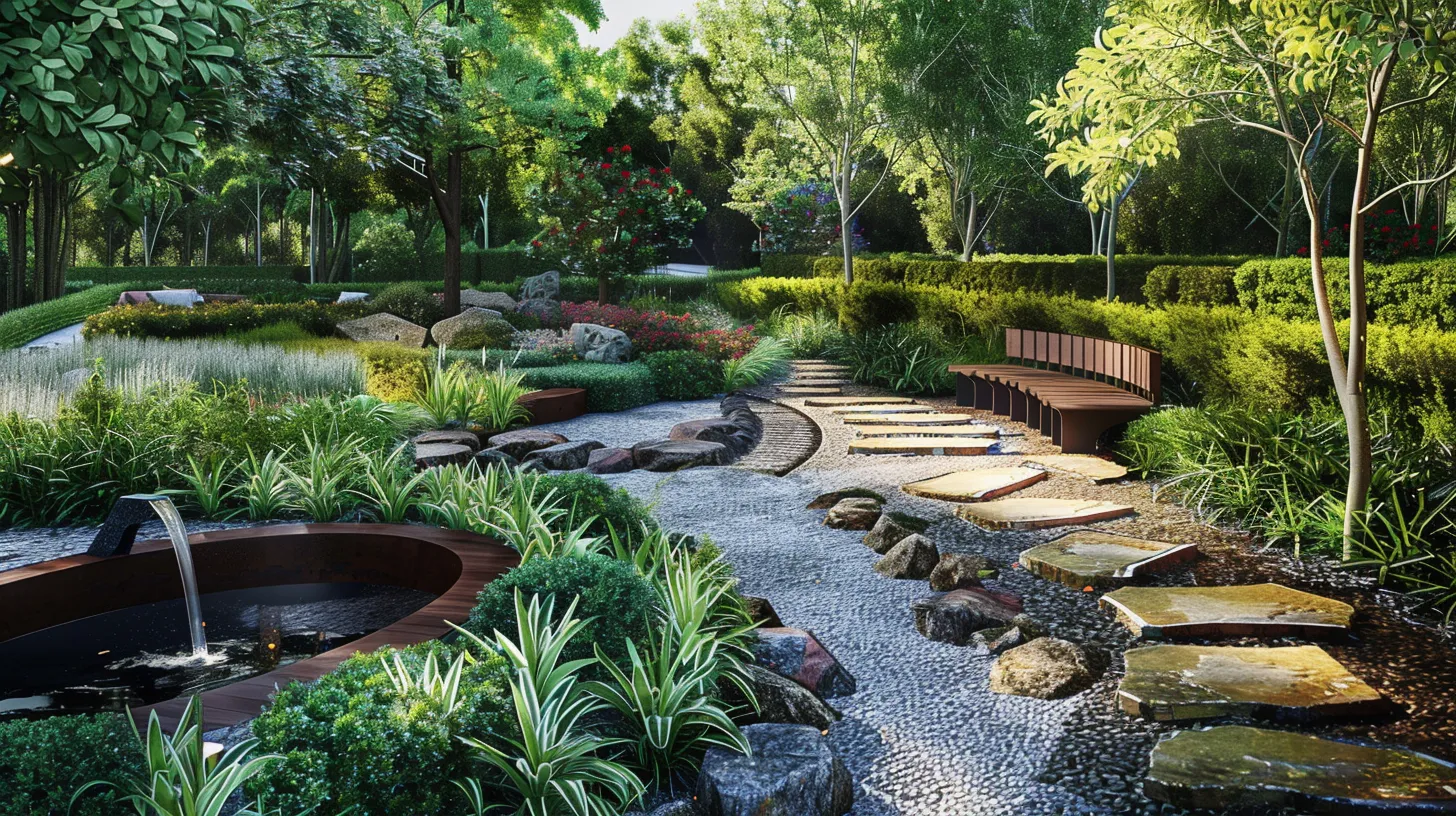A perfectly balanced landscape is not only a visual treat but also a space that serves practical purposes while promoting environmental health. Whether you’re a homeowner looking to create a peaceful retreat or a business aiming for a welcoming and functional exterior, achieving this balance requires careful planning. By combining aesthetics, functionality, and sustainability, you can create an outdoor space that enhances your property’s value, reduces maintenance costs, and benefits the environment. Here’s how you can achieve this harmonious balance.
1. Start with a Clear Vision and Purpose
Before you begin planting or designing, think about what you want your landscape to achieve. Is it an outdoor entertainment space? A peaceful garden for relaxation? Or perhaps an area that supports local wildlife?
Knowing your purpose will guide decisions around plant selection, layout, and hardscaping features. Consider the long-term goals of your property and how your landscape can support those goals in terms of aesthetics, usability, and sustainability.
2. Design with Functionality in Mind
Functionality is a key element in any balanced landscape. When planning your layout, think about how the space will be used. Consider the following elements:
- Pathways: Clearly defined paths lead people through the garden or yard, providing both visual structure and ease of movement.
- Seating Areas: Create comfortable, functional areas to relax or entertain.
- Shade and Privacy: Use trees, hedges, or pergolas to offer shade, reduce glare, and ensure privacy.
- Water Management: Plan for drainage solutions, like swales or rain gardens, to handle runoff and prevent flooding.
A landscape should serve both practical and aesthetic purposes. Thoughtful planning of these features ensures that the space is not only beautiful but functional for everyday living.
3. Use Native and Drought-Resistant Plants
When choosing plants, prioritize native species that are well adapted to your local climate. These plants are more likely to thrive without excessive watering, fertilizers, or pesticides. Native plants support local wildlife, such as pollinators like bees and butterflies, contributing to biodiversity.
If you live in a region prone to drought, select drought-resistant plants that can withstand dry conditions and require minimal water once established. This reduces the need for constant irrigation, conserves water, and lowers your water bills.
4. Incorporate Sustainable Landscaping Practices
Sustainability is at the core of any balanced landscape. Here are a few key practices to consider:
- Water Conservation: Use efficient irrigation systems such as drip irrigation, which targets the roots of plants and minimizes water waste. Installing rain barrels can help collect rainwater for watering.
- Composting: Instead of sending yard waste to the landfill, create your own compost to enrich your soil. It’s a sustainable way to nourish your plants and reduce the need for chemical fertilizers.
- Mulching: Apply organic mulch around plants to conserve moisture, regulate soil temperature, and reduce the growth of weeds.
- Soil Health: Use organic methods to maintain healthy soil, ensuring that plants can grow robustly while also benefiting the environment.
By integrating sustainable practices, your landscape will not only be environmentally friendly but also lower maintenance and more cost-effective in the long run.
5. Incorporate Hardscaping for Structure and Durability
Hardscaping elements such as patios, walkways, retaining walls, and fences provide structure to your landscape while reducing maintenance. These features also help manage stormwater runoff and can enhance the overall functionality of the space.
Be sure to choose durable, sustainable materials for your hardscaping. Opt for permeable surfaces that allow water to infiltrate the soil, reducing runoff and supporting the natural water cycle. Stones, bricks, and gravel are excellent choices that add texture and visual interest.
6. Prioritize Low-Maintenance Solutions
While beauty and functionality are essential, low-maintenance landscaping is the key to keeping your outdoor space manageable. Here are a few low-maintenance design strategies:
- Use Groundcovers: Low-growing plants like creeping thyme or ground covers such as clover can replace grass, which often requires mowing and constant care.
- Opt for Evergreen Plants: Incorporating evergreen plants ensures year-round greenery and reduces the need for seasonal planting.
- Minimal Lawn Area: Large lawns can be high-maintenance, requiring frequent mowing, watering, and fertilizing. Consider reducing lawn areas and replacing them with more sustainable ground covers or other hardscaping elements.
7. Use Color and Texture to Enhance Aesthetics
Balance beauty and practicality by choosing a variety of plants with different textures, colors, and shapes. This will add visual interest and depth to your landscape. Group plants with complementary textures, such as broad-leafed plants next to fine-textured grasses or shrubs.
Seasonal changes can also enhance the beauty of your landscape. Select plants that offer color variation throughout the year, whether through flowers, foliage, or bark. For example, vibrant spring flowers, followed by summer foliage, fall colors, and winter interest, can keep your garden looking fresh and beautiful year-round.
8. Plan for Long-Term Growth
Landscaping is an investment in your property, and like any investment, it should be planned for long-term success. When choosing plants, think about their mature size and how they will grow over time. Plant trees and shrubs in locations where they have room to grow, ensuring they won’t outgrow their space or interfere with structures like fences or buildings.
Regularly maintain your trees and shrubs to promote healthy growth and prevent them from becoming overgrown. Regular pruning, mulching, and watering are essential for maintaining a balanced landscape.
If you’re unsure where to start, the experts at Price Right Professional Landscaping & Tree Service can help you plan a landscape that grows beautifully over time.
9. Incorporate Outdoor Lighting for Function and Ambiance
Outdoor lighting is an excellent way to enhance the functionality and beauty of your landscape. It provides safety and security while also creating an inviting atmosphere in the evening. Strategically place lights along pathways, near seating areas, or highlighting architectural features and trees to add depth and visual appeal.
Consider using energy-efficient LED lights and solar-powered lighting options to minimize energy consumption and reduce your carbon footprint.
10. Professional Tree and Landscape Care
To ensure your landscape remains balanced, beautiful, and healthy, consider working with professionals like Price Right Professional Landscaping & Tree Service. Their certified arborists and landscaping experts provide tailored services, from expert tree pruning to full landscape design based on sustainability and functionality.
About Price Right Professional Landscaping & Tree Service
At Price Right Professional Landscaping & Tree Service, we specialize in creating landscapes that blend beauty, functionality, and sustainability. Our ISA-certified arborists provide expert tree care and landscape design services in Fort Worth, TX, helping you achieve a space that thrives year-round. Contact us today to start planning your dream landscape!
Business Name: Price Right Professional Landscaping & Tree Service
Address: 2227 White Lane Haslet, Fort Worth, TX 76052
Phone number: (817) 675-8565

